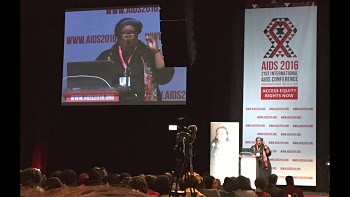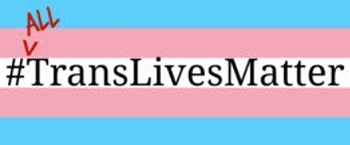Also available in: Español
Source: Corresponsales Clave
The session Trans-forming prevention and HIV care presented interesting studies on the dynamics of the infection in Trans people. Unfortunately, they did not participate at the protagonists’ discussion table.
By: Diego Leonardo Mora
Key words: #AIDS2016, United States, Trans Women, Participation, Differentiated health services, Trans
Trans people, estimated in 25 million globally, are vulnerable due to the lack of differentiated health services to meet their needs. Although this has been known for several years, there were not sufficient studies to support such a statement. Since 2012, the studies on this population significantly increased in order to meet the challenge of integrating health with the respect of human rights with a multisectoral perspective. Data shows that from 7 studies then, now there are 50 studies.
 The studies show that mental health is the first cause of access to health services in the United States by transgender population, followed by sexual and reproductive health, drug abuse, violence, stigma and finally overall health, said Tonia Poteat, of John Hopkins University from the United States. She also stated that among the sub-causes regarding sexual health, the first one is the sexually transmitted infections, followed by HIV.
The studies show that mental health is the first cause of access to health services in the United States by transgender population, followed by sexual and reproductive health, drug abuse, violence, stigma and finally overall health, said Tonia Poteat, of John Hopkins University from the United States. She also stated that among the sub-causes regarding sexual health, the first one is the sexually transmitted infections, followed by HIV.
Asa Radix from the Callen-Lorde Community Health Center of the United States said that Trans women are disproportionately affected by HIV; although there is less information about transgender men, recent studies would have identified that this population is also at high risk, especially those identified as Men having sex with Men (MSM).
Since the implementation of the Callen-Lorde Community Health Center, clinic focused on providing care to LGTB population in New York, 1,500 people have been given access to PrEP. During the 3 years of operation, the clinic has provided PrEP to 118 people, out of which 71, 2% were trans women, 10,2% queer and 18,6% trans men. The clinic is trying to expand the pre-exposure prophylaxis among the most affected populations and it has started the distribution of educational material and videos that have Trans people as actors.
 On the other hand, Robert Garofalo from the Northwestern University in the United States, spoke about the high prevalence of HIV in Trans women. A global analysis of HIV burden among Trans women found a prevalence of 19%, whereas, another analysis based in the United States found a prevalence of 28%. 40% of participants were members of the black population, 12% Latinos, 25% were white and 14% of other populations.
On the other hand, Robert Garofalo from the Northwestern University in the United States, spoke about the high prevalence of HIV in Trans women. A global analysis of HIV burden among Trans women found a prevalence of 19%, whereas, another analysis based in the United States found a prevalence of 28%. 40% of participants were members of the black population, 12% Latinos, 25% were white and 14% of other populations.
Undoubtedly, Trans people represent one of the most affected populations by the HIV virus and one of the barriers to solve this problem, is the poor access to services and deficient care they receive in health facilities, due to weak training of health personnel to address this particular population.
Some of the sessions of the AIDS International Conference -such as this one- deserve criticism, where Trans people do not participate as protagonists of the history and on the responses, but as people subject to a study. I dare saying that Durban is – no doubt- one of the global conferences that has presented most scientific content, but it has left aside key populations and community organizations, with little mention of the advancements and challenges in terms of human rights in several countries.
